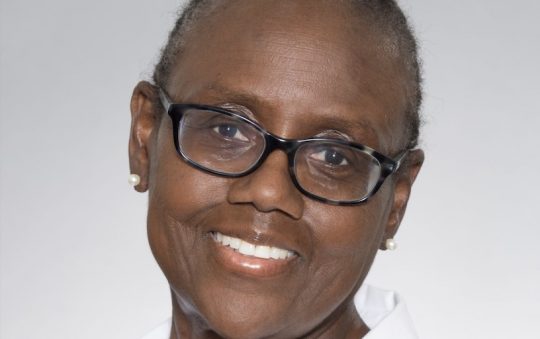
Michaela Pereira
By Michaela Pereira
Sentinel Contributing Writer
The other day, right after Mother’s Day in fact, I had an interesting conversation with my mother. She shared with me that during a recent visit with my eldest sister, Darlene, the two had discussed my sibling’s interest in working on a family tree. Her family tree. At first blush, that might sound easy enough.
But you see, my sister, along with the other four girls in our family, me included, are adopted. My parents collected kids (and to a certain extent, still do) like some people collect artwork or commemorative spoons; adopting a total of 5 girls during the early years of their marriage.
First came Darlene, adopted out of foster care at age 4. She was their first. That same year, I arrived on the scene just before Christmas. I was just a baby–3 months old. Our little family of four remained in tact for a few years, Mom & Dad adjusting to the demands of having two children, one of which who had, already in her short life, been through much pain, trauma and loss and would forever bear the scars of such. Five-year-old Sheila joined us a few years later, also from Foster Care. Her lengthy itinerary in the “system” belied her young age; by the time she reached our home, this little girl had been in 7 foster homes. It wasn’t until I was 9 or so that the next and final addition came to our growing family in the form of sisters; Mary Lou 9 and Laurie 11.
While I was the only kid in our family that didn’t experience foster care (as an infant I had a brief stay in a home for babies awaiting adoption) I was quite aware of the affect of being taken away from their families and being moved around from home to home had had on my sisters.
And I do call them my sisters. We may not be blood, but these women; those girls were and ARE my family. Those two wonderful people that CHOSE to take each and every one of us into their home and open their hearts to us are our parents. This is what I know to be true.
This takes me back to my opening thought about Darlene’s interest, and subsequent challenge in creating HER family tree.
She has married twice and had three children, and recently became a grandmother for the third time. Additionally, Darlene has had some luck connecting with members of her birth family and is currently looking for her birth father. I venture a guess that this is what spurned her interesting in mapping out her roots.
And that’s just Darlene; each of us girls has over the past decade or so embarked on the same journey, to some success and on occasion disappointment. I recently realized that none of our birth mothers are still living. Heartbreakingly, mine passed from Cancer over 10 years ago, a year and a week after I started my search for her. While that door closed, another opened in the form of her daughter, my half sister. We met for the first time last year and are now as thick as thieves! My other sisters have made connections with siblings, aunts and uncles, and in one case, with her birth mom a few months before she passed away. For all of us, these reconnections have provided both healing and closure.
Over the phone, with my mother, I came up with an idea for Darlene’s family tree borrowed from science textbooks I remember using in high school.
Remember the diagram of the human body? Each transparency would pull back to reveal the skeletal system, the nervous system, arteries etc. What about using a series of transparencies, laid over one another, each transparency carrying the information of each part of Darlene’s family? The first layer, HER tree, would show her 3 beautiful daughters, their partners and offspring. The next layer could be OUR family history–Mom, Dad and the 5 of us, with additional layers, with our (adoptive) aunties, uncles, their children and our late grandparents.
And then last but not least the final, every expansive layer, the layer representing her newly discovered biological family. These are her roots and so very important to the structure of this tree.
I remember once explaining to someone why despite my happy home life and loving parents, I felt so strongly that I needed to search for my birth family. I used the tree metaphor once again describing how I see myself as a tree, through the years with the benefits of sunshine and fertilizer, growing taller and stronger, even developing my own branches. But if you were to look below the earth at my root system, some would be missing. And without support of those missing roots, I would soon list to one side and not be the tall, flourishing tree in the forest that I could be.
While this metaphor and my idea for Darlene’s family tree are not brilliant or even new, both perfectly illustrate how important each and every one of these branch systems creates a beautiful, resilient Tree. And for adoptive children like myself or former foster youth like my sisters, this can be a powerful aid in seeing that we are not, nor have we been alone, rather we a part of something strong, beautiful and true.






